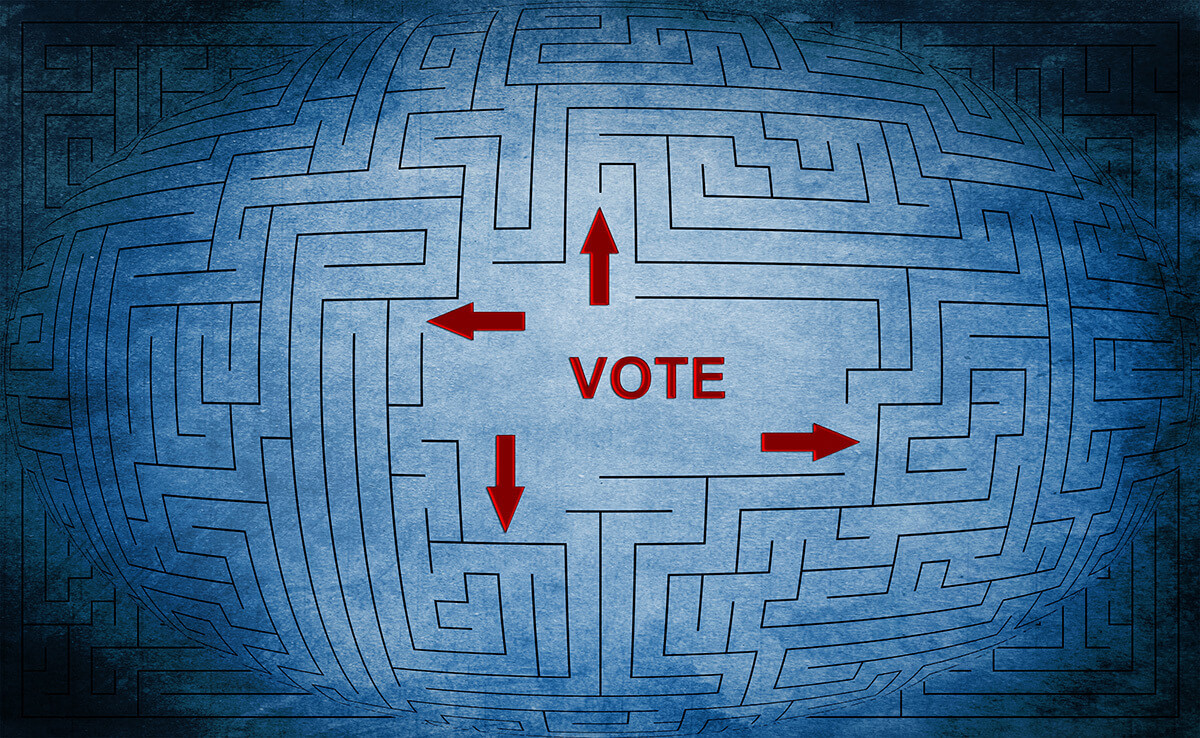If you thought the corkscrew twists and hairpin turns of the 2016 and 2020 presidential campaigns made understanding the U.S. electoral process akin to decoding hieroglyphics, get ready for the 2024 White House race to shift into high gear. The upcoming dance of democracy promises to be a stampede of whirling dervishes on steroids — several times screwier and noticeably curvier.
Both the Democrats and Republicans have adopted Frank Sinatra’s signature tune “My Way” as their shared theme song for next year’s nominating schedule. But that classic is about the only thing the two major parties will have in common.
It looks as though the GOP will kick off the selection of delegates in January, while the Democrats will get their ball rolling a month later.
Gone are the days when the two parties would hold caucuses and primaries on the same day in the early voting — and often consequential — states. In 2000, 2008 and 2016, Democrats and Republicans braved Iowa winter nights together to participate in caucuses around that state. During those three election years, the first primary contests in New Hampshire also took place for both parties at the same time.
No more. For 2024, Republicans are planning to hold Iowa caucuses on January 15 (Martin Luther King, Jr. Day), with the New Hampshire primary on January 23 and the South Carolina primary on February 24. The Democrats announced that they wanted the South Carolina primary on February 3 as their first competition for next year.
Several factors influenced this decision. South Carolina, 69 percent white and 26 percent Black, has very different racial demographics than 90 percent white Iowa and New Hampshire.
Another reason? President Joe Biden performed poorly in Iowa the last two times he’s competed there, so he doesn’t want the state to lead the Democratic parade. In 2008, he placed fifth with just 4 percent of the vote, and in 2020 he finished fourth with15.8 percent. (Then-South Bend Mayor Pete Buttigieg won with 26.2 percent in 2020, just ahead of Vermont Senator Bernie Sanders with 26.1 percent in a result that took several days to determine.)
Republicans in 2024 are sticking to tradition: slotting Iowa first, which might be chancy. In the past two GOP caucuses that mattered for the nomination, 2012 and 2016, the Iowa results were disputed. In 2012, former Massachusetts Governor Mitt Romney was declared the winner on the night of the caucus, but a review of the voting that was announced two weeks later revealed Rick Santorum, a two-term senator from Pennsylvania who left office in 2007, triumphed: 24.6 percent to Romney’s 24.5 percent. By then, Romney had benefited from the momentum of his Iowa “victory” to take the New Hampshire primary by a wide margin.
Four years later, Texas Senator Ted Cruz finished first in Iowa (with 27.6 percent), but Donald Trump (who had 24.3 percent) rejected the vote totals. He tweeted: “Ted Cruz didn't win Iowa, he stole it.” A little later, he blasted out: “Based on the fraud committed by Senator Ted Cruz during the Iowa Caucus, either a new election should take place or Cruz results nullified.” In his humble opinion, Trump has never lost an election.

What might happen in 2024 is anyone’s guess, particularly with a candidate field that keeps growing. By establishing different days for the early contests, the two parties will make the process more partisan in the eyes of voters. Instead of any sense of common purpose, Republicans will set off on their path and Democrats will take another. For Democrats, though, as was the case for Republicans in 2020, having an incumbent seeking reelection usually reduces serious competition.
Besides the upcoming different states and different dates, how votes ultimately translate into delegate strength will baffle most observers, too. Democrats prefer awarding delegates in proportion to the votes received by candidates, while Republicans tend to favor a winner-take-all approach. These two types of delegate distribution can also allow for variations within themselves. Some winner-take-all rules apply to Congressional districts rather than to entire states.
If you’ve become totally confused, don’t worry. You’re not alone. That’s why commonsense, national legislation is necessary in picking nominees for the nation’s highest office. The every-state-for-itself mentality is ridiculous, particularly with the privileged status now enjoyed by contests that are at the head of the line.
Why should any state carry more weight than another? It’s not fair.
Rather than a state-based approach, why couldn’t there be a regional one — possibly with ten states grouped together in five separate regions? The regional model would allow the process to spread out to, say, a five-month period: March through July. The party conventions, featuring the formal nomination of the presidential and vice-presidential candidates, could occur in August — with the cross-country campaign marathon beginning in September.
The haphazard, always changing process that currently exists is not only incomprehensible but also undemocratic. Having a level campaign field, without irrational twists and curves, could help restore trust in the government and those leading it.
Without trust, there’s less chance of arriving at agreement or consensus. The weeds of partisanship grow out of control to choke out the common ground that’s needed to solve America’s most vexing and perplexing problems.
Bob Schmuhl is the Walter H. Annenberg-Edmund P. Joyce Professor Emeritus of American Studies and Journalism at Notre Dame. He’s the author of several books, most recently The Glory and the Burden: The American Presidency from the New Deal to the Present (published by Notre Dame Press).